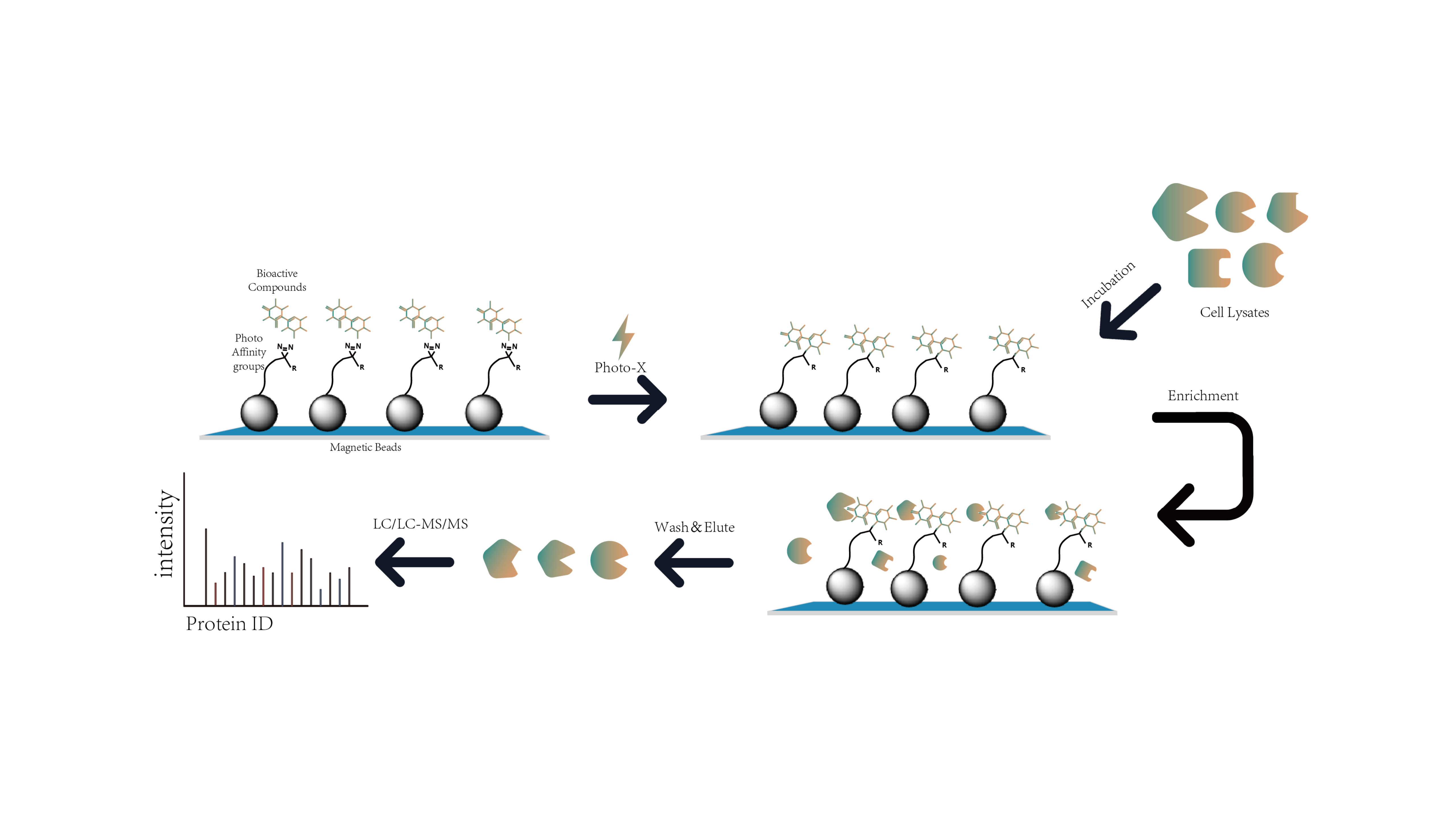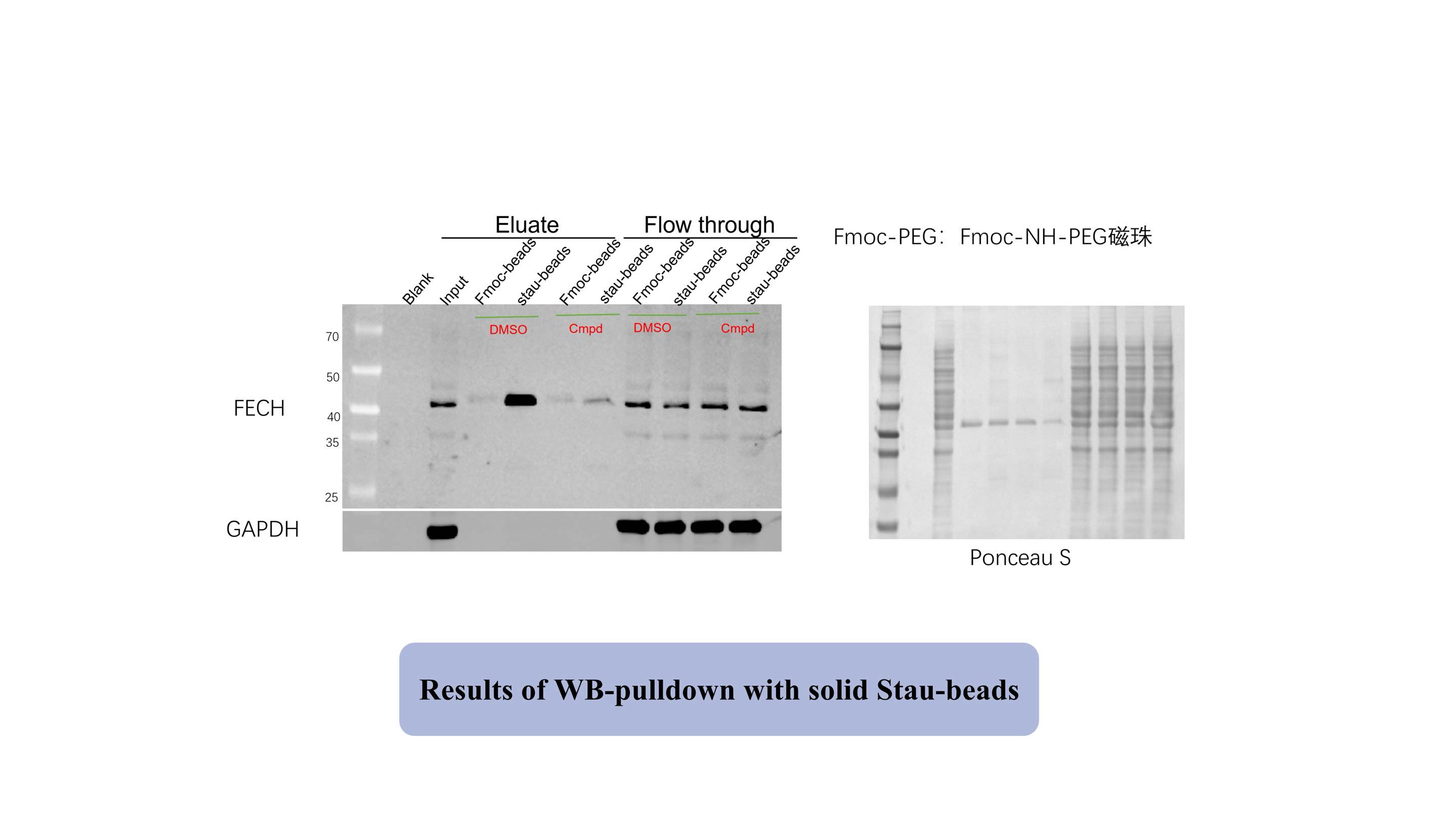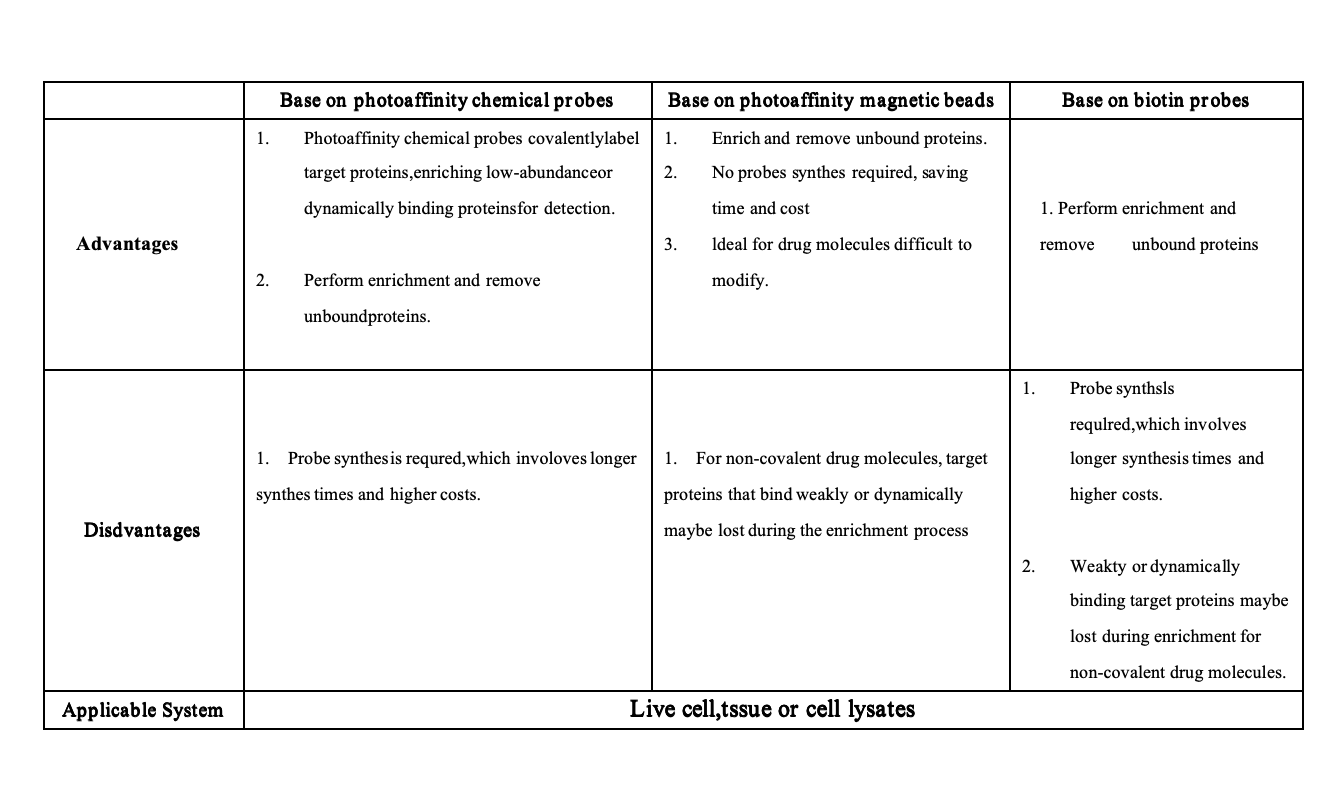技术平台
化学蛋白质组学具有先进的药物靶标发现功能,尤其是基于化学探针的平台。然而,药物分子合成复杂、产量低、成本高、SAR 未知等挑战阻碍了进展。
光亲和磁珠平台通过紫外线照射将活性药物分子固定到功能磁珠上,从而消除了化学探针设计的需要,从而解决了这些问题。这确保了药物与其靶蛋白之间的特异性结合。与蛋白质组一起孵育后,珠子富集并分离药物靶蛋白,然后通过免疫印迹和质谱分析。

平台特色
案例研究
为了验证星形孢菌素 (Stau) 的靶点,我们将其固定在光亲和修饰的功能磁珠 (Stau-beads) 的表面上。随后,我们将 Stau 珠与整个蛋白质组一起孵育,并使用 Fmoc 珠作为对照组。得到的蛋白质印迹(WB)结果如下图所示,表明Stau-beads有效富集了目标蛋白FECH(已知的阳性靶标)。

接下来,我们对使用 Fmoc-beads 和 Stau-beads 富集和分离的蛋白质进行酶消化和质谱分析。我们定量比较了实验组(Stau-beads)和对照组(Fmoc-beads)之间的蛋白质强度差异。结果表明,所有已知的阳性靶蛋白在Stau-beads组中均显着富集,证实了该方法的有效性。



